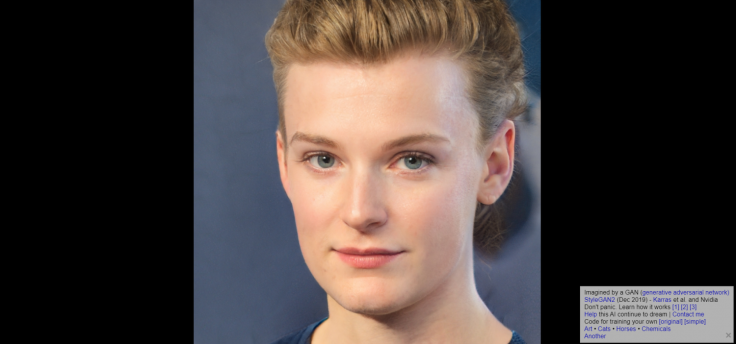
This Person Does Not Exist (thispersondoesnotexist.com) is a website that lets you generate a random-yet-realistic looking face through artificial intelligence.
The website works in a simple manner. All you have to do is press the refresh button, and the website will render an overly-realistic, lifelike portrait of people who 'do not exist.'
Humans are not the only creatures featured on this website. You can also create hyper-realistic cats (This Cat Does Not Exist), horses (This Horse Does Not Exist), and even artwork (This Artwork Does Not Exist).
Phillip Wang, a former software engineer at Uber, is the man behind this human image synthesis website.
How Does This Person Does Not Exist Work?
This Person Does Not Exist works under an algorithm called generative adversarial network (GAN).
Nvidia initially coded StyleGAN back in 2018 and made it available for the public in early 2019.
This GAN has gone through millions of trial-and-errors to create the best image possible. Put it like this: the generator learns from thousands and millions of real-life portraits, understands their patterns, and recreates it.
This is not the only website that uses this technology. There's also a website called Judge Fake People that lets you rate the attractiveness of AI-generated faces like it's on dating app Tinder.
However, this wasn't the first time such technology gives a polite introduction to how dangerous our discoveries could be.
In 1971, French computer scientist Henri Gouraud modeled his wife to make the first-ever computer graphic geo-capture. That's why 3D artists name Gouraud shading, a basic solid modeling technique, after the man.
Has Tech Gone Too Far?
This Person Does Not Exist indeed raises a big concern: what if the technology we design will come back to haunt us?
In the longer term, no one could ever guarantee this technology to be free from abusers. In this era, misinformation and hoaxes are never more accessible than before.
Unfortunately, this technology indeed could play a massive part in spreading hoaxes.
This year, China has reportedly set a new policy requiring hyper-realistic AI-generated portraits to bear a clear notice or a disclosure. Failure in meeting the requirement is a cybercrime, according to the Cyberspace Administration of China.
"With the adoption of new technologies, such as deepfake, in online video and audio industries, there have been risks in using such content to disrupt social order," CAC representative told South China Morning Post.
Wang created this site to remind people about what could be a rude awakening. Since its release, more than 4.2 million people have visited the website.
"The reaction speaks to how much people are in the dark about A.I. and its potential," he said.
"I just hope my demonstration raises awareness. Those who are unaware are most vulnerable to this technology."
Read also:
Cyberpunk 2077: An Insider Leaks An Email About the Company's Grueling Crunch Culture
Self-Charging Battery that can Surprisingly Last for up to 28,000 Years can be Coming Soon.
Samsung One UI 2.5: Surprisingly Better User Experience and Convenience









